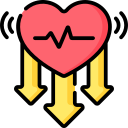Chosen theme: Mindful Breathing Techniques for Stress Reduction. Take a welcoming breath and step into a calmer, kinder daily rhythm—practical, science-aware, and deeply human ways to feel steadier under pressure.



Foundations: Posture, Pace, and Gentle Attention
Sit or stand with length through your spine, letting your ribs and belly move naturally. A soft jaw and relaxed shoulders create space for the breath to travel without force, urgency, or performance pressure.
Foundations: Posture, Pace, and Gentle Attention
Your ideal breathing tempo is unique. Start slower than usual, then nudge toward smoother, even cycles. If you feel air hunger or dizziness, shorten counts and return to comfortable, steady breaths without self-critique.
Core Techniques You Can Start Today
Inhale for four, hold for four, exhale for four, hold for four. Maintain a gentle, quiet breath. Two minutes can smooth sharp edges of stress and restore a grounded, deliberate pace to your thoughts.

Micro‑Practices for Real Life Moments
Before a Tough Conversation
Take three rounds of extended exhales. Inhale gently, exhale longer, and let your chest soften. Ask yourself, “What matters here?” Then enter the discussion with steadier presence and a kinder tone.
During Commuting Chaos
Try paced nasal breathing while waiting or walking. Count four in, six out, eyes relaxed. Each cycle is a quiet boundary against noise and hurry, returning you to your own deliberate rhythm.
When You Wake at 3 A.M.
Stay in bed, place a hand on your belly, and breathe five and five. Imagine exhaling weight out of your shoulders. No pressure to sleep—just permission to rest comfortably and drift if your body chooses.
Tracking Progress and Staying Motivated
After a brief practice, jot one sentence: how you felt before, what you tried, and what changed. Over weeks, these notes reveal your most helpful patterns and gently celebrate meaningful progress.
Tracking Progress and Staying Motivated
Notice how quickly you recover after a stress spike, how easily you fall asleep, and how often you sigh naturally. Subtle shifts are real wins—share yours in the comments to inspire others.


Common Myths, Gentle Corrections
Myth: Deep Breathing Means Huge Breaths
Bigger isn’t better. Gentle, quiet breaths through the nose usually calm faster than forceful inhalations. Think smooth and steady, not dramatic. If you feel dizzy, slow down and shrink the counts.


Myth: It Should Work Instantly Every Time
Breathing can help quickly, yet stress varies. Practice when calm, so techniques are familiar when you need them. Progress is often quiet and cumulative—like strengthening a supportive muscle.
Gentle, regular breathing can increase variability between heartbeats, a marker linked with adaptability. You might notice this as steadier energy and smoother emotional recovery after stressful or emotionally charged interactions.
